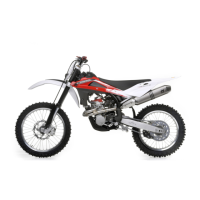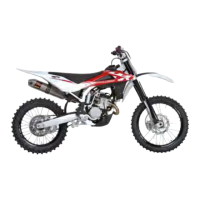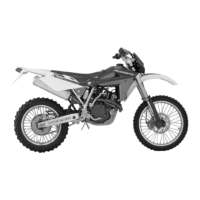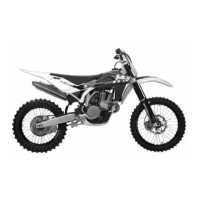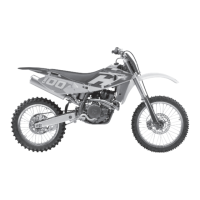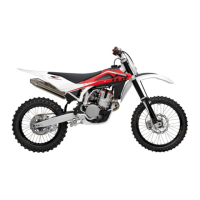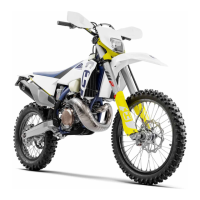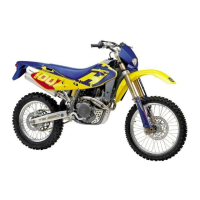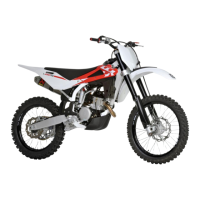Settings
Proper suspension tuning is the key to achieving optimal performance. This para-
graph describes the proper setting procedure for the Marzocchi suspension.
Achieving proper tuning is a trial and error process. You will need to determine
what to adjust and how.
Perform this procedure outdoors, in a low trafc area free from obstacles and
potential danger.
Key considerations for optimal tuning are not limited to chassis geometry, rider
weight, type of terrain and track conguration, but also include such personal
factors as riding style.
As a result, standard settings may need to be adjusted to suit personal prefer-
ences and specic conditions.
When setting the suspension, work on one adjuster at a time and note any
changes you make and the improvements achieved.
WARNING
Never attempt to turn the adjusters beyond their limits.
Rider sag adjustment
Rider sag (how far the suspension settles under rider's weight) is determined by
the spring rate of the spring.
How to measure sag
Sag is measured as follows: Lift the front end of the motorcycle so that the wheel
is off the ground. Measure the portion of leg between axle carrier and dust seal
and note the measurement naming it “H1”.
Repeat measurement with the motorcycle upright and both wheels on level
ground. Note measurement and name it “H2”.
SAG = H1 - H2
Ideal sag is 25 - 40 mm (depending on the kind of racing sport practised).
If sag is less than specied, you will need to reduce spring preload or install a
softer springs in order to achieve top suspension performance. Conversely, a
sag higher than specied requires lower preload or a harder spring.

